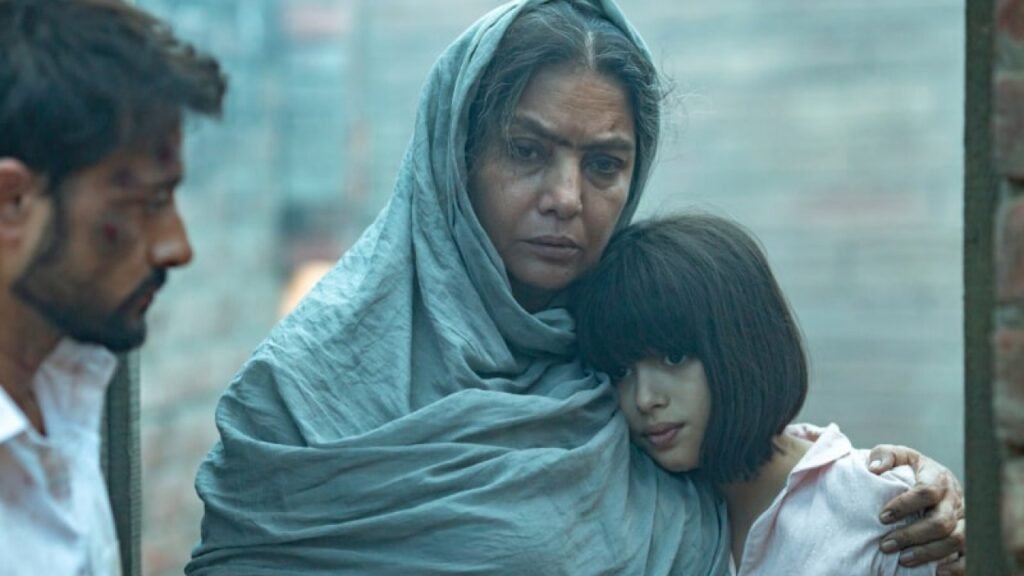Kaali Khuhi Movie Review: The Movie Gives A Strong Message
Kaali Khuhi Movie Review: Jhol in the story, but Shabana Azmi’s ‘Kali Khoohi’ gives a strong message. The story of ‘Kaali Khuhi’ is set in a fictional village in Punjab, where Darshan’s mother (Leela Samson) lives.
Darshan, living in another town, comes to the village with his wife Priya (Sanjeeda Sheikh) and 10-year-old daughter Shivangi (Reva Arora) after receiving the news of his mother’s illness.
Priya does not like the bitter things about her mother-in-law. She is an educated woman. Priya does not want to go to the village but goes on insisting on her husband.
The reason for Darshan’s mother’s illness is a spirit, which is in his house. In the opening scene of the film, the story of this spirit’s freedom from the well and reaching home has been shown.
Darshan’s mother suddenly recovers one day and curses Priya for not having a son. Then the reason is understandable why Priya does not want to come to the village.
Meanwhile, Shivangi starts seeing spirit in the house, which is a child (Hetvi Bhanushali) of his age. Shabana Azmi is the neighbor of Darshan. Everyone calls them Masi.
Shabana’s character is the most important page in the village’s dark secret book, which Shivangi wants to read and get to the bottom of it, because the secret of that spirit is hidden in this mystery.
Gradually, the real face of Rooh is revealed. Rooh would have killed Grandma. Darshan also attacks, but he survives. Then comes Priya’s turn. She falls seriously ill.
After all, Rooh also kills Darshan near the same well. Before being killed she asks the question why did he leave her (Rooh)? It is of Sakshi, sister of Rooh Darshan, who after being born gave it to the elderly women .
According to the village customs and they killed her and threw her into Kali Khuhi. Darshan was then five years old. Maasi had Kali Khushi locked up after those women died.
Rooh takes Baby, Chandni (Rose Rathore), who is living with Maasi, in his possession. Masi decides that she should leave the village. However, spirit does not let go.
Masi then tells Shivangi that she is a new generation. Only she can stop. Actually, this is also the message of ‘Kali Khoohi’ as a film.
As strong as the message of ‘Kali Khoohi’ is, the way it is shown is as lame. There are many such bags in the story, which weaken. For example, the film depicts the girls being thrown into a well after being born, but Rooh’s age is shown around 10 years of age.
It is obvious that a newborn cannot be made a soul, but even showing the age of spirit as 10 years does not hurt
The strange behavior of philosophy is beyond comprehension. There is a layer of mystery and excitement in his behavior, but why? There is no explanation for this in the story.
The whole village is shown wrapped in mist and wretched silence. Just before the dispensary a crowd was shown, where people are talking about an epidemic in the village.
This epidemic is also called a curse, which is due to the spirits of hundreds of innocent people buried in Kali Khuhi. People are discussing that 11 corpses have been found in the field, but still, no government system is going to get news.
The cinematography of Sejal Shah has rightly captured the village desolation. However, in the name of locales, the house of Darshan and the room above which the soul resides, is Maasi’s house and Kali Khuhi.
Changing scenes in limited locales is a challenge for cinematographers. According to the actress, the real ‘soul’ of Kali Khuhi is Shabana Azmi. The rest of the cast have given them good support, so it is not difficult to spend an hour and a half.
Kaali Khuhi, despite being weak at the level of the story, gives a strong message. The best thing about the film is its duration. The ‘Kaali Khuhi’ propagated as horror does not scare at all. Yes, some scenes do excite.
‘Kaali Khuhi’ is directed by Terry Samundra. Terry, who has settled in the US, has been making short films like Ice Cream, Vallah, Kunjo before. The dialogues of the film are written by Rupinder Inderjeet.
The story-screenplay is of Terry and David Walter Lech. It does not take long to realize from the screenplay that India and the village have been seen from a foreign point of view. There is a lack of desirability in Terry’s direction.




